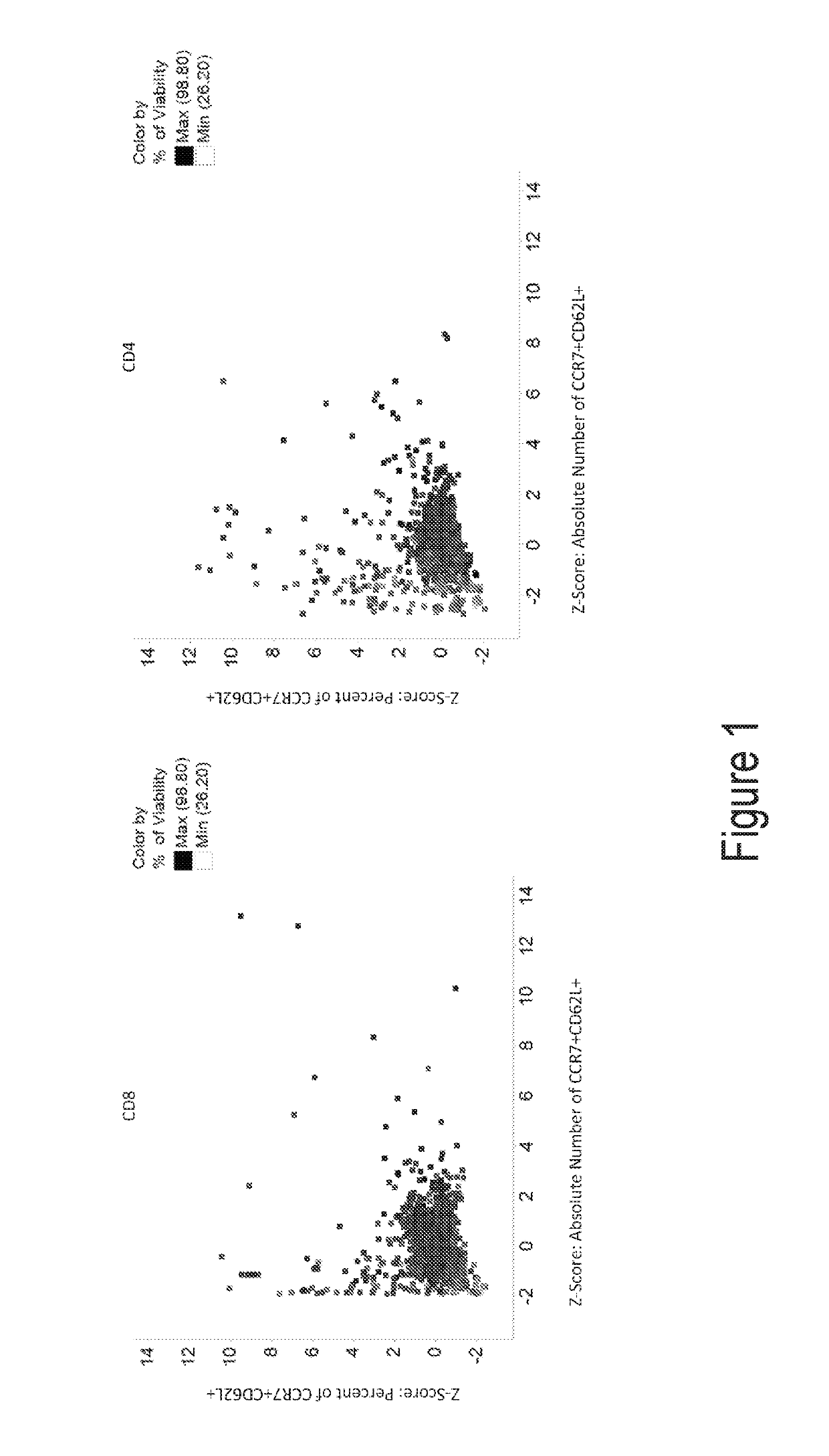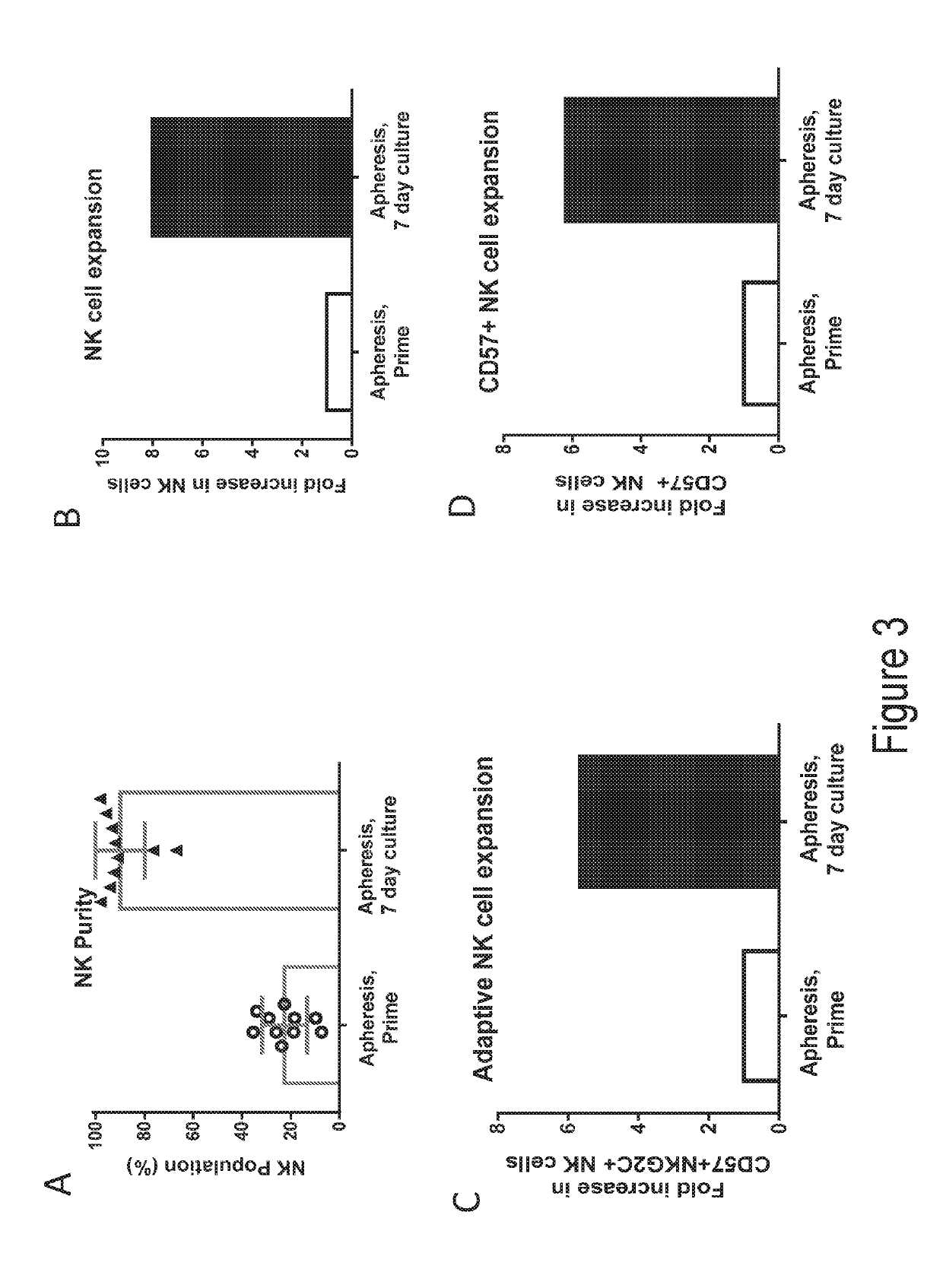Compositions and methods for immune cell modulation in adoptive immunotherapies
a technology of immune cell and adoptive immunotherapy, which is applied in the field of adoptive immunotherapy, can solve the problems of limiting one's ability to intervene and obtain cells having desired quantity and quality for their therapeutic use, and the pathways and/or players involved in achieving these attributes are largely unknown, so as to improve the therapeutic potential of adoptive immunotherapy, improve the proliferation, persistence, cytotoxicity, and/or cell recall/memory of therapeutic immune cells.
- Summary
- Abstract
- Description
- Claims
- Application Information
AI Technical Summary
Benefits of technology
Problems solved by technology
Method used
Image
Examples
example 1
Methods and Materials
[0220]In Vitro T Cell Culture. Fresh leukopaks (AllCells, Alameda, Calif.) were obtained from healthy donors, from which T cells were negatively selected using the EasySep Human T cell Enrichment Kit (Stem Cell Technologies, Vancouver, Canada). The freshly isolated T cells were aliquoted and cryopreserved. On the day the screens were initiated, T cells were thawed and washed into X-Vivo 15 with 5% human AB serum, IL-2, pen / strep, and additional supplements. Cells were dispensed into flat-bottom 384-well plates at 5×105 cells / ml with anti-CD3 / Anti-CD28 dynabeads (ThermoFisher, Waltham, Mass.) at a 3:1 bead-to-cell ratio. Individual compounds were added at a final concentration of 10 μM to each well from column 3 to column 22 of each plate. Positive and negative controls were added to additional wells. Cells were incubated for about 6 days at 37 degrees with 5% CO2.
[0221]Flow Cytometry. On Day 6 of culture, cells were stained with a fixable viability marker and fl...
example 2
Agent for Immune Cell Modulation
[0229]Data were analyzed to identify compounds that either produced a higher proportion or greater absolute number of phenotypically identified naïve, stem cell memory, or central memory T cells. These cells are characterized by expression of CCR7 and CD62L. Therefore, cells co-expressing both of these identifying markers were evaluated. Within the viable CD4+ population and viable CD8+ population, the percent of cells co-expressing CCR7 and CD62L was determined. The expression of either CD62L or CCR7 on T cells, as indicative of the desired T cell subsets, have been described as having favorable functional characteristics for CAR-T cell therapy, and potentially other adoptive T cell therapies. Under the treatment of dorsomorphin, heptelidic acid, GSK3 inhibitor, 6-Mercaptopurine, AC-93253 iodide, tiratricol, PI-103, 5-Azacytidine, 5,7-dichloro-8-Quinolinol, Nitrofurantoin, 5-chloro-7-iodo-8-Quinolinol, or di ethylenetriaminepentaacetic acid, the numb...
example 3
In vitro Triage Experiments of the Selected Compounds
[0233]In vitro experiments are performed to optimize methods for compound exposure and triage compounds that have detrimental impacts on T cell functions. Initial tests determine optimal dose of individual compounds while also evaluating whether the impact on naïve, stem cell memory, and central memory T cells observed previously are replicated in additional donors. To triage compounds with potential detrimental functional impacts on T cells, in vitro assessments for proliferative capacity, ability to polarize to Th1 and Th17, survival through a cryopreservation / thaw cycle, transduction efficiency, and tumoricidal activity of CAR-transduced T cells are performed. Compounds that reproducibly improve ratio or number of naïve, stem cell memory, or central memory T cells during expansion without significant negative impacts on T cell function are tested in combination and assessed for additive or synergistic effects. Through these ass...
PUM
| Property | Measurement | Unit |
|---|---|---|
| Fraction | aaaaa | aaaaa |
| Fraction | aaaaa | aaaaa |
| Fraction | aaaaa | aaaaa |
Abstract
Description
Claims
Application Information
 Login to View More
Login to View More - R&D
- Intellectual Property
- Life Sciences
- Materials
- Tech Scout
- Unparalleled Data Quality
- Higher Quality Content
- 60% Fewer Hallucinations
Browse by: Latest US Patents, China's latest patents, Technical Efficacy Thesaurus, Application Domain, Technology Topic, Popular Technical Reports.
© 2025 PatSnap. All rights reserved.Legal|Privacy policy|Modern Slavery Act Transparency Statement|Sitemap|About US| Contact US: help@patsnap.com



